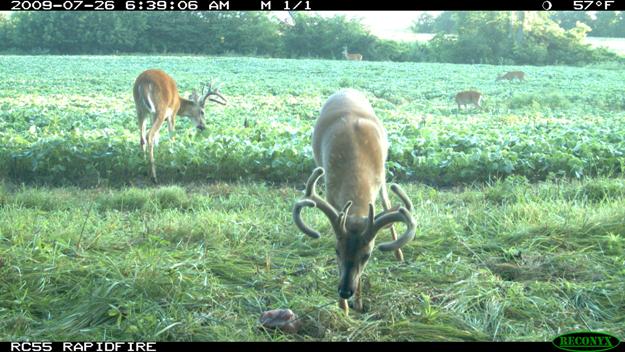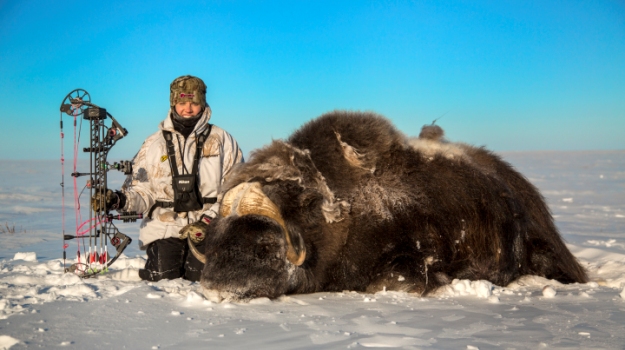by Austin Delano

This is one of my favorite times of the year. The anticipation of what might show up this year as the antlers begin to develop is always super high. I have even found myself in the past few years putting out BioRocks in urban landscapes and backyard woodlots just to see what deer frequent the area even though I have no intention of hunting there.
Creating new mineral sites can be especially exciting when you have a new piece of ground to investigate and see what deer are living there and what the potential of the area is. Refreshing old mineral sites or creating new ones is also a good family and kid friendly management activity. It doesn’t require any heavy equipment or long hours and can be a great way to help teach kids some woodsmanship along the way and why whitetails use mineral licks.
So how do you establish a productive mineral site? It may seem as simple as pouring it in a depression you dig up with your boot or throwing a BioRock out on the edge of a food plot. These scenarios will work to a degree, but I like to put a little more thought and effort into my mineral sites and try to get the most out of them in terms of attraction, utilization, and trail camera use. That way I can get an inventory on the deer that are using the area as well as identifying bucks through unique characteristics.
As with other hunting related tactics, studying an aerial map of the property on which you plan to create one or multiple mineral sites can be helpful. As a general rule, one mineral site is needed for every 80-100 acres of land. If you have a high deer density, you may want to increase that rate a little. Whitetails, like people, have different personalities and habits. Some deer don’t mind visiting and using a mineral site that a bunch of other deer are spending a lot of time at.
I have found, on the other hand, certain older age class bucks don’t like to use mineral licks where a large number of other deer are constantly in and out of. I think they feel this could expose them to unwanted danger or attention brought on by the inexperience of the younger deer. It’s no different than the reason mature bucks often eat alone in a food plot and typically have their own trails and access points to fields and cover. For this reason, I usually create a mineral site in high traffic areas where I know does, fawns, and younger bucks will utilize it. In that same area, usually in thick cover where I know mature bucks like to bed and stay hidden, I create another mineral site to encourage use for these older age class bucks that are creatures of the night and want to stay away from fawns with happy feet and other ignorant young deer. This theory of mine has proved itself to me on several properties where mineral sites are pretty closely located to each other and trail cameras show totally different groups of deer using each.
One of my favorite ways to establish a mineral site is to look for a semi-rotten tree stump, preferably one of a hardwood. Ideally the top of the stump has a hole or a good place to wedge the rock so that it cannot be pushed or nudged off when deer use it. If the stump is still pretty flat on top, I generally use a hatchet to create a depression or split the stump somewhat to wedge the rock down in it. The stumps make great locations for mineral licks for a couple reasons. As rainfall slowly melts the rock and other added minerals over time, they leach into the wood of the stump as well as the surrounding root system. Deer love to paw and chew at the mineral soaked wood and will eventually wear it completely down or dig the stump up completely.
There are some situations where you may want to keep your rock up off the ground and there are not any stumps available. Swampy areas that are prone to flooding, land that receives a lot of rainfall, or property that has feral hogs that destroy mineral sites close to the ground can all be good reasons to look for an alternative. This problem can be resolved fairly easy by using a piece of steel rebar, some rubber hose, and a hose clamp. A 4 to 5-inch piece of rubber hose can be clamped around the rebar 8-10 inches from the top to create a stop for the rock to sit on. The rebar can be driven in the ground in the area where you want to establish a mineral site as well as driving the rebar into an existing or freshly created stump. A hole can be drilled through the rock large enough to slide down over the rod and sit on top of the stop you created with the hose and clamp. Most anything could be used to create the stop on the rebar stake such as a welded nut. I chose to use the hose and clamp because it was adjustable for different size rocks. This method of keeping the mineral rocks up off the ground is very effective for guys that have problems with feral hogs.





























